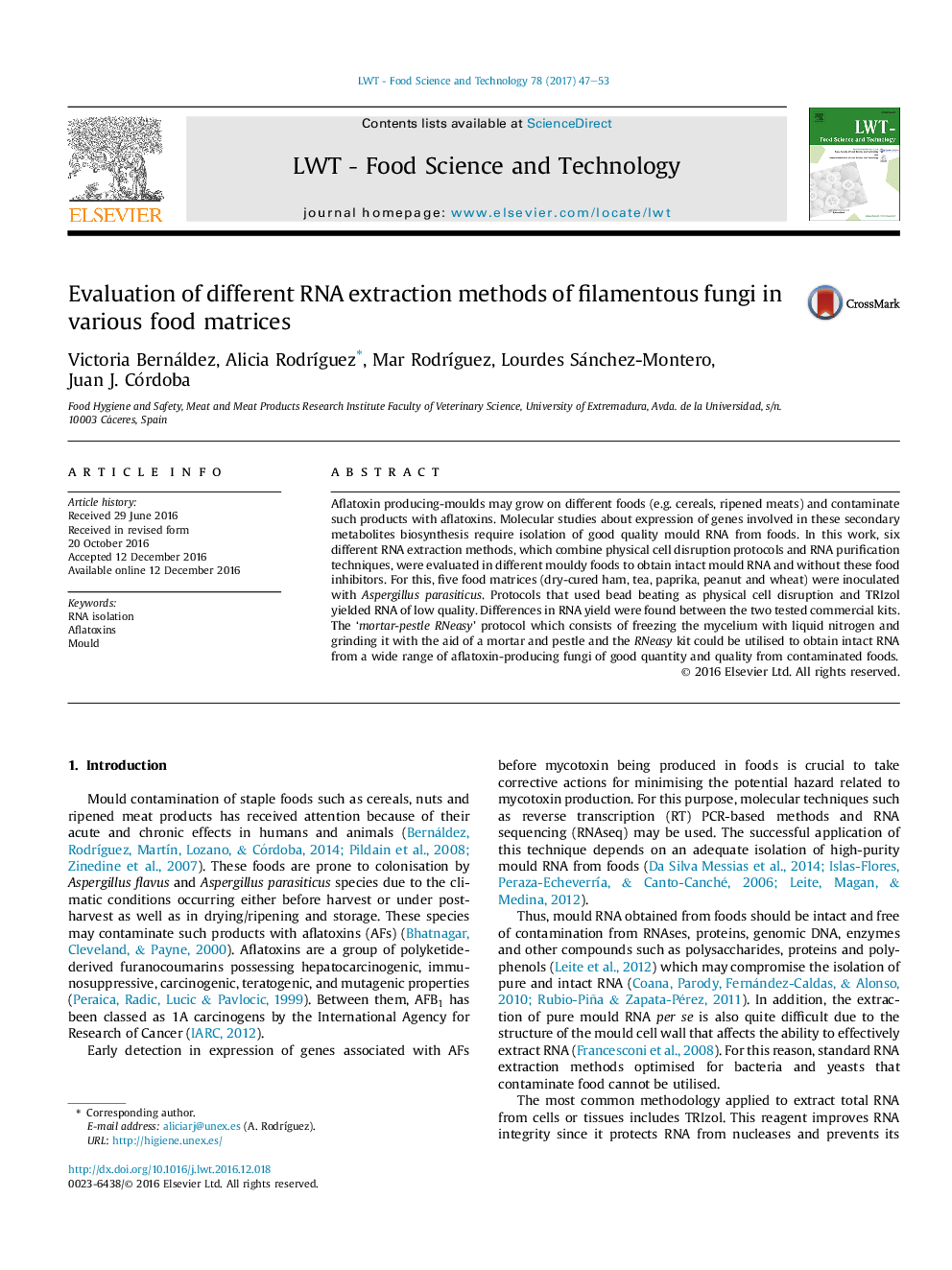| کد مقاله | کد نشریه | سال انتشار | مقاله انگلیسی | نسخه تمام متن |
|---|---|---|---|---|
| 5769018 | 1628520 | 2017 | 7 صفحه PDF | دانلود رایگان |

- Six mould RNA extraction protocols from contaminated foods were evaluated.
- Yield, quality, integrity and absence of genomic DNA were checked for all extracted RNA.
- The highest efficient method includes lysis using mortar and pestle and RNeasy kit.
Aflatoxin producing-moulds may grow on different foods (e.g. cereals, ripened meats) and contaminate such products with aflatoxins. Molecular studies about expression of genes involved in these secondary metabolites biosynthesis require isolation of good quality mould RNA from foods. In this work, six different RNA extraction methods, which combine physical cell disruption protocols and RNA purification techniques, were evaluated in different mouldy foods to obtain intact mould RNA and without these food inhibitors. For this, five food matrices (dry-cured ham, tea, paprika, peanut and wheat) were inoculated with Aspergillus parasiticus. Protocols that used bead beating as physical cell disruption and TRIzol yielded RNA of low quality. Differences in RNA yield were found between the two tested commercial kits. The 'mortar-pestle RNeasy' protocol which consists of freezing the mycelium with liquid nitrogen and grinding it with the aid of a mortar and pestle and the RNeasy kit could be utilised to obtain intact RNA from a wide range of aflatoxin-producing fungi of good quantity and quality from contaminated foods.
Journal: LWT - Food Science and Technology - Volume 78, May 2017, Pages 47-53